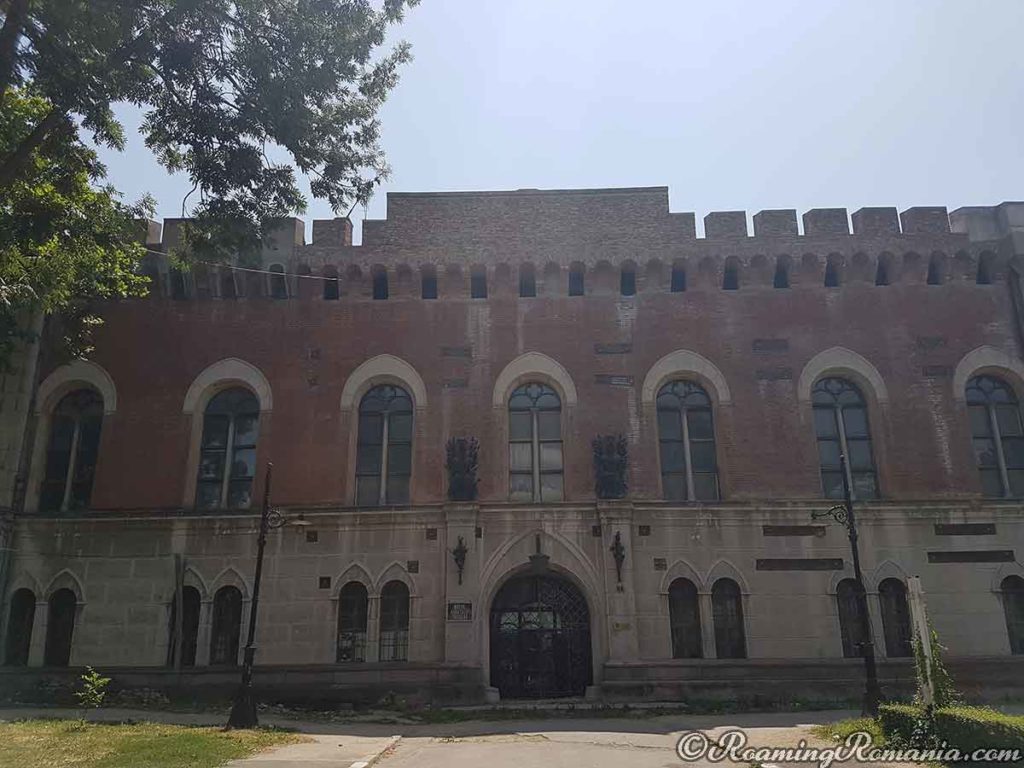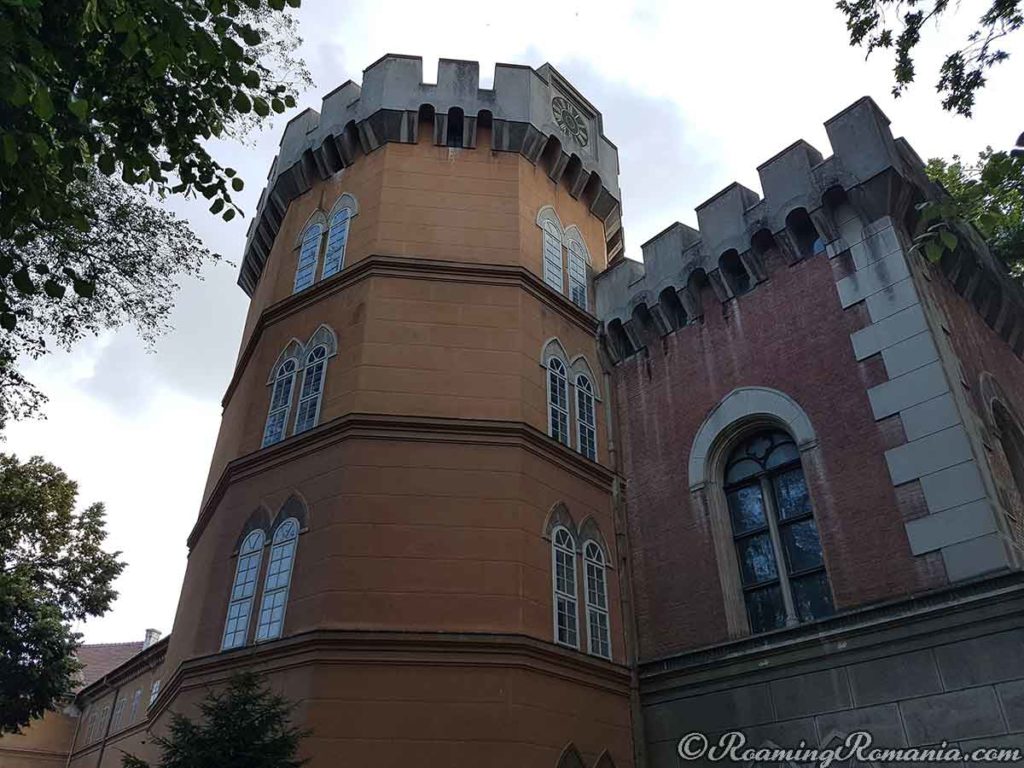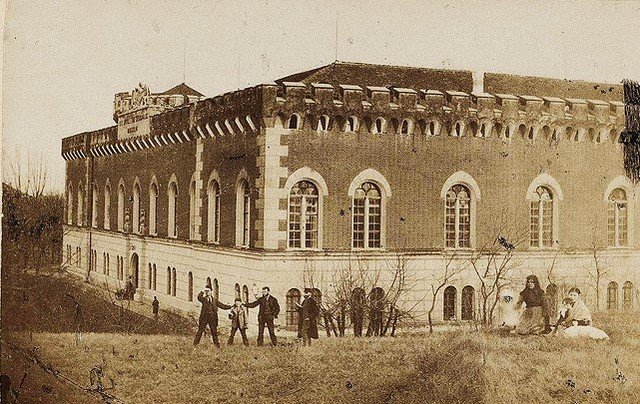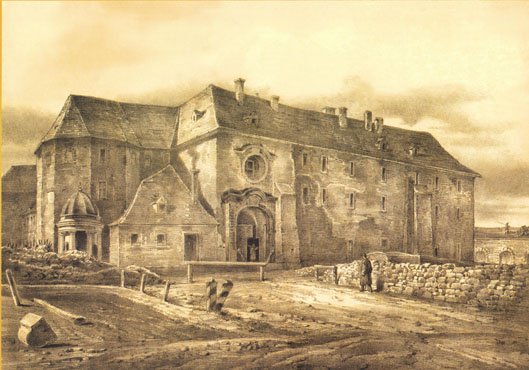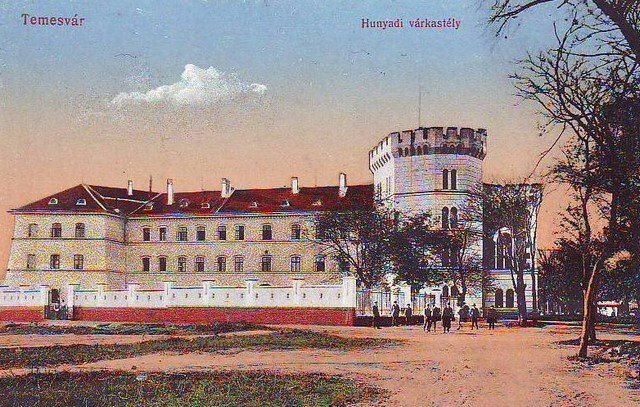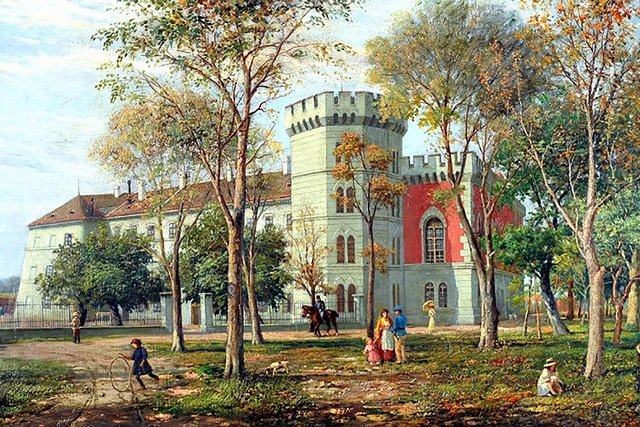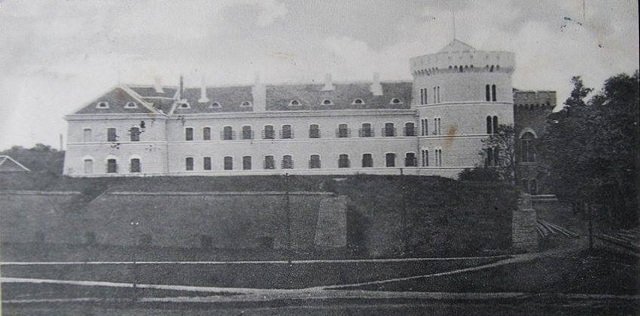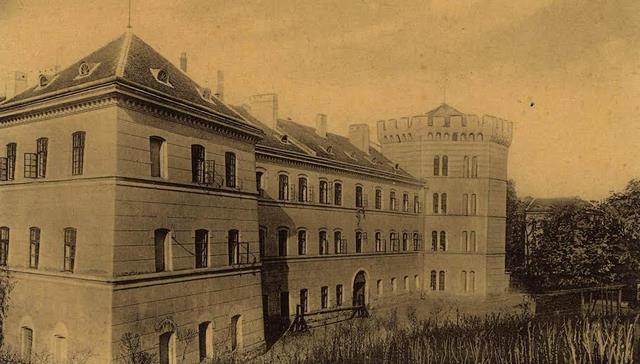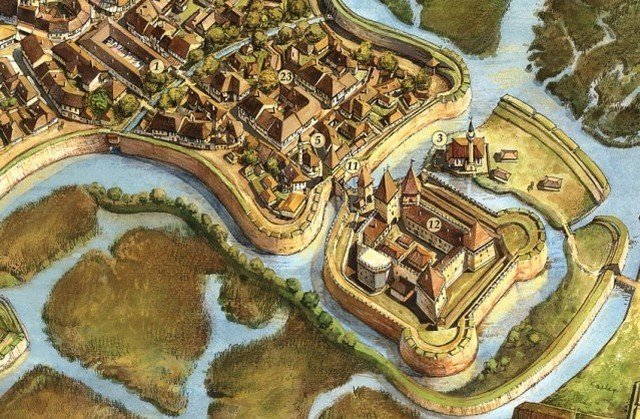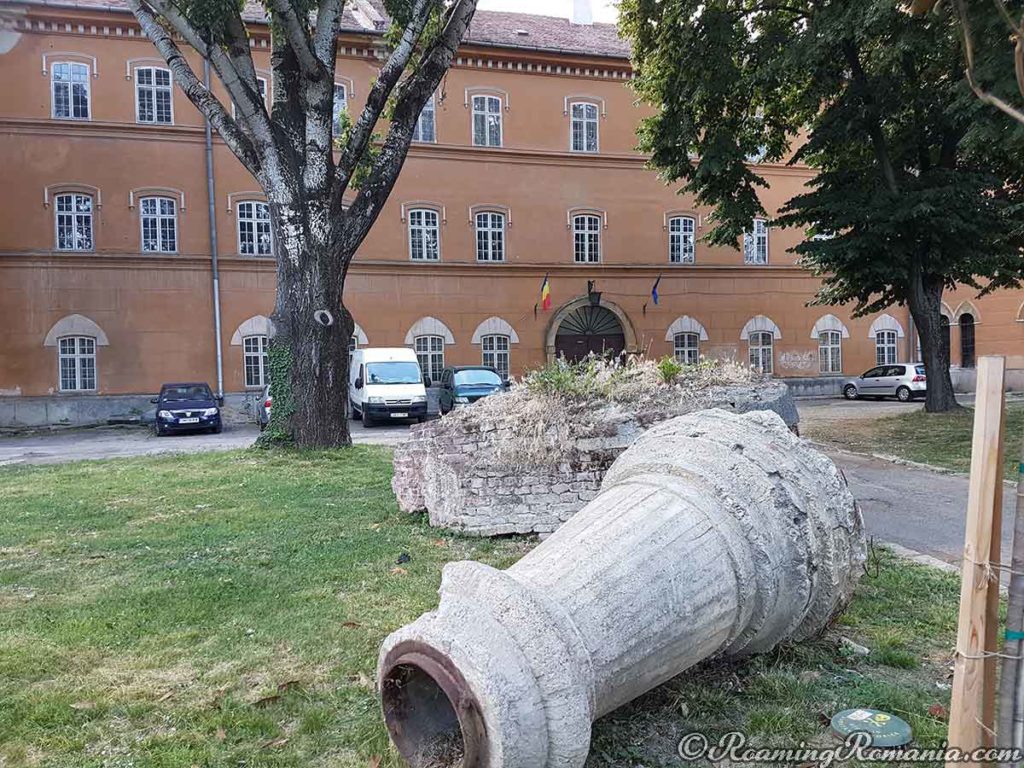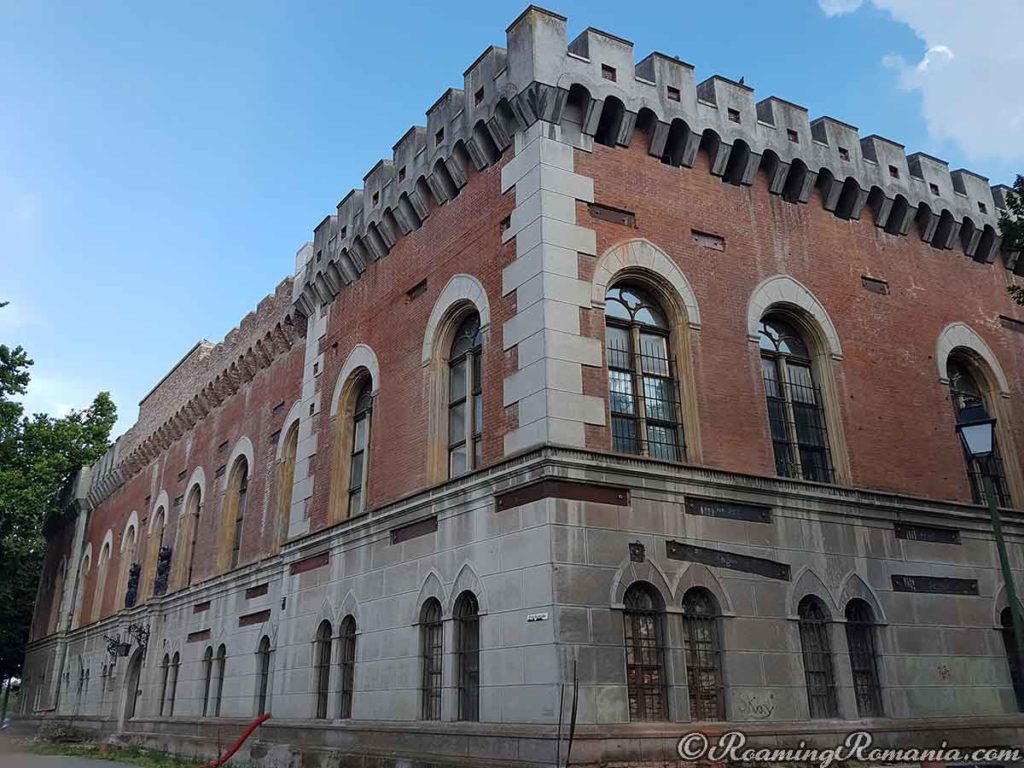Huniade Castle Timisoara – Summary
The Huniade Castle (Castelul Huniade) is an early 14th century Romantic and Neo-Gothic castle located in the city of Timisoara, Romania. The building is considered a Romanian Historical Monument and is documented as the oldest standing structure in the city. The Huniade Castle has served as the living headquarters for some of the greatest kings in the region. The historical castle has been ravaged repeatedly by natural disasters, wars, and various uprisings. Despite the numerous devastations it endured, one thing always remained consistent, the Huniade Castle always went on to be rebuilt.
Although the Huniade Castle’s primarily role throughout history was that of serving as the headquarters for Kings and various other commanders of Timisoara, throughout the decades, the castle was also used for different purposes. The Huniade Castle has been used as a fortification shelter for nobles during a peasant uprising, it served as a weapons storage facility for the Habsburgs in between wars with the Turks, and it was also used as a torture facility where captured invaders were brutally beaten and executed.
Since 1948 the castle has been used to host the National Museum of Banat. The museum includes departments for archaeology, ethnography, history, and natural sciences. It also contains the largest collection of archaeological objects of Banat. While Romania was under the rule of Ceausescu, the communist leaders changed the museum’s name to the “Timiş County Museum Complex” in attempts to erase the historical term of Banat from history. Today, due to ongoing renovations at the Huniade Castle, the museum has been relocated inside the city’s Maria Theresia Bastion
Huniade Castle Timisoara – Table of Contents
- Huniade Castle Timisoara – History
- Huniade Castle Timisoara – Architecture
- Huniade Castle Timisoara – Present Day
- Huniade Castle Timisoara – Video
- Huniade Castle Timisoara – Visitor Info
Huniade Castle Timisoara – History
The Huniade Castle, in its centuries of existence, has been a key determining factor of some of the most significant roles in the development, survival, and formation of the city of Timisoara. Although it sustained extensive amounts of damage on numerous occasions throughout the decades, the castle’s highly fortified strategic location in the city’s center enabled it to evade ever being completely destroyed. Its story of survival throughout the ages is a true testament to the importance of the role that fortified castles played throughout history.
Huniade Castle History – 14th to Early 15th Century
The Huniade Castle’s history starts in the year 1307 when King Charles I of Hungary visited the city of Timisoara. King Charles wanted to find a new location to establish temporary residency while the Kingdom of Hungary was undergoing political turmoil. The king liked the prospect of the fortified city of Timisoara and immediately enlisted Italian builders and craftsman to construct a magnificent castle, that would be suitable for a king, inside the fortification. King Charles I moved into the castle upon its completion in 1315, where he lived for about eight years.
Around the year 1407, the Holy Roman Emperor Sigismund enlisted his personal friend, general, strategist, and confidant, Filippo Scolari (Pippo Spano) as the commander of Timiș (Temes County). Scolari brought Italian craftsman and artists with him to Timisoara to completely renovate the Huniade Castle. After the restorations of the castle were complete it was said to have been so extravagantly redone that it rivaled the luxury and sophistication of the Royal Palace of Visegrád. The Italian magnate Scolari lived and ruled out of the castle up until his death in 1426.
Huniade Castle History – Mid 15th to Late 15th Century
After Scolari’s death, the next commander to rule over Timiș was John Hunyadi (Ioan de Hunedoara). Hunyadi had lived in the Huniade Castle as a young nobleman and underwent advanced melee combat and Italian tactical military training at the hand of Filippo Scolari. Hunyadi went on to become one of the greatest military commanders of the 15th century and to eventually be appointed voivode of Transylvania. Due to his military brilliance and innovative battle tactics, such as using wagons for combat purpose and mobilizing local peasantry to partake in defensive battles, he is highly credited for protecting vast areas across modern-day Romania from invasion by the Ottomans.
In 1443, while Timiș was under Hunyadi’s command, a massive earthquake struck the land that nearly completely destroyed the Huniade Castle. Hunyadi had the castle completely rebuilt using engineering that would be suitable for military defense of the modern time. In 1455, under an act from King Ladislaus the Posthumous, Hunyadi was given the city of Timisoara where he continued to reside, in between continual battles with the invading Ottomans, in the Huniade Castle until his death in 1456. The castle remained the property of Hunyadi’s family until around the year 1490.
Huniade Castle History – Late 15th to Early 16th Century
Around the year 1484, the commander of Timiș became the infamous Pál Kinizsi (Pavel Chinezu) a general of the Hungarian army under king Matthias Corvinus. Kinizsi is notoriously known for being one of the only generals in world history to never lose a battle. His brutal and barbaric treatment of Turkish Ottoman prisoners struck fear and hatred across the Islamic empire. Kinizsi used the Huniade Castle cellar as a torture dungeon, where he would tie the hands and feet of his prisoners and sew them into buffalo skins. He would also have his prisoner’s hands and feet cut off and then fed to hungry pigs. He used pigs because of how despised they are under the Islamic religion.
In 1514, the city of Timisoara was under siege of a peasants’ revolt led by György Dózsa. A great number of nobles had fled to the city, to seek protection from the revolts happening across the land, because of how fortified it was. Dózsa led an army of about 20,000 peasants, students, friars, and parish priests to lay siege on the city. After about a month of unsuccessfully trying to penetrate the city’s fortification, Dózsa was eventually captured and brought to the Huniade Castle where he was beaten and tortured. He was then executed in a heinous and brutal fashion in the St. Maria’s Square, just blocks away from the castle.
Huniade Castle History – Early 16th to Late 19th Century
The Huniade Castle castle’s history of turmoil didn’t end in the 16th century, in fact, every devastation it undertook prior to the 16th century was just the beginning of the long life of constant destruction and restoration it’s endured. In 1552, the Ottomans took control of Timisoara after the siege of Temesvár. During the siege, the Huniade Castle was nearly brought to ruins after it sustained a slew of artillery fire from the invading Ottomans. The Ottoman’s rebuilt the castle after taking the city and used it as their military headquarters for over a hundred years.
In 1716, during the Austro-Turkish War, the castle was yet again bombed nearly into ruins, this time by the Habsburgs who came to reconquer Timisoara. In 1727, the castle was again reconstructed, this time it underwent slight modifications from its original version to suit its new purpose of being an arsenal and artillery barracks. In 1849, during the Battle of Temesvár, the castle was bombed for the 3rd time, and once again nearly destroyed. After the Austrians defeated the Hungarian’s and took Timisoara, they launched a large-scale restoration of the Huniade Castle in 1856, the results of which the castle’s current form was acquired from.
Huniade Castle Timisoara – Architecture
Throughout the many decades of the original construction of the Huniade Castle, the building has been nearly destroyed and rebuilt numerous times. Although the castle underwent significant changes to portions of its design each time it was redone throughout the ages, the buildings main architecture remained relatively consistent.
The first version of the Huniade Castle (1307 – 1315) was made of brick on a foundation of oak pillars using the Venetian system of fortification. The edifice was developed around a quadrilateral courtyard with corner cylindrical towers. It was located on an island, connected by a movable bridge, and sat just outside of Timisoara’s city center, the present-day area of Victory Square.
The second major version of the castle was rebuilt under new strategic requirements of the century to include semicircular towers that were adapted to support the use of cannons and artillery as a means of defense. It was also enlarged and several buildings inside were completely rebuilt. The Huniade Castle, along with the city’s center, was surrounded by moats that provided an extra layer of defense against would-be invaders.
Each following time the castle was destroyed and rebuilt it was slightly redesigned or enlarged to suit the needs of the era it existed in. Because of its strategic location and its significance as the headquarters of city rulers, great importance was always placed on redeveloping the castle in order for its occupants to be able to use it to its full potential.
Huniade Castle Timisoara – Present Day
Today, the Huniade Castle of Timisoara, which survived the ravages of over 700 years of tumultuous history, is a shell of its former imposing self. Due to mismanagement by city officials, and lack of funds, the castle has lain waste to bad weather and devastations of time. The castle’s infrastructure has succumbed to large cracks, leaks, and crumbling walls.
Renovation projects of the castle were supposed to have started in 2006 but the city has failed to acquire the estimated 10 million Euros needed to fully restore the Huniade Castle. There is great pressure on city administrators to restore the castle by the year 2021 when Timisoara will be designated the European Capital of Culture.
Huniade Castle Timisoara – Video
Huniade Castle Timisoara – Visitor Information
Location
The Huniade Castle is located in Timisoara’s city center just east of Victory Square. The castle sits in the middle castle park (Parcul Castelului) which contains walking trails that loop around different portions of the building. Google Maps of Location
Visitation
The Huniade Castle’s interior is currently closed to visitation while stalled renovation plans are currently being negotiated. However, the outside of the building is accessible to visitors and tourists are allowed to walk around and photograph the building’s exterior.
